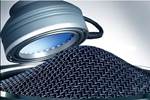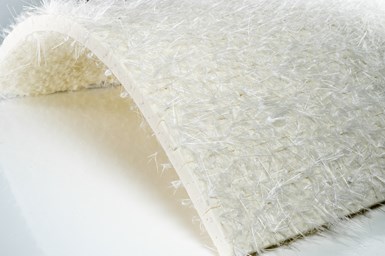Saertex presents SAERfoam structural core materials
Hybrid core material is simple to process, highly economical and exhibits a shear modulus up to four times greater in comparison to PVC and PET.
Saertex GmbH & Co. KG’s (Saerbeck, Germany) SAERfoam is a structural core material combining ultralight foam (PU/PE/PIR) combined with 3D glass reinforcement. Featuring customizable mechanical properties and very low weight, SAERfoam is able to act as a replacement for conventional core materials such as PVC, PET and balsa.
The SAERfoam series consists of new standard styles SAERfoam 80 and SAERfoam 60 as well as the SAERfoam + edition. SAERfoam 80 has been developed to improve the handling of structures such as boat hulls, decks and large industrial parts made via infusion. SAERfoam 60, which preserves molds, is more dedicated to resin transfer molding (RTM). The SAERfoam + edition includes all non-standard articles and enables customized adaptions— fire protection solutions, for example, are possible by combining this series and Saertex LEO.
SAERfoam exhibits a shear modulus up to four times greater in comparison to PVC and PET, Saertex says, ultimately reducing deflection and enabling thickness reduction. SAERfoam is also easy and inexpensive to cut, lowering its material cost compared to PVC, and requires less resin consumption compared to PET. The latter is particularly true due to the sheet’s natural flexibility before being impregnated with resin; the ability to produce large, curved shapes can reduce resin consumption by approximately 1 kg/m². Further, for areas below the waterline, the core will not absorb water, in case of outer skin failure.
Saertex points to one recent application, which combined SAERform with glass noncrimp fabric (NCF) for 25% weight savings for the bodies of Lamberet’s (Saint-Cyr-sur-Menthon, France) Frigolight refrigerated van concept. Made possible with Segula Technologies (Nanterre, France) and Saertex’s design and technical support, the results are a highly durable composite structure in comparison to heavier traditional components, and optimized looks with an improved surface finish.
Related Content
-
Plant tour: Teijin Carbon America Inc., Greenwood, S.C., U.S.
In 2018, Teijin broke ground on a facility that is reportedly the largest capacity carbon fiber line currently in existence. The line has been fully functional for nearly two years and has plenty of room for expansion.
-
Bio-based acrylonitrile for carbon fiber manufacture
The quest for a sustainable source of acrylonitrile for carbon fiber manufacture has made the leap from the lab to the market.
-
Sulapac introduces Sulapac Flow 1.7 to replace PLA, ABS and PP in FDM, FGF
Available as filament and granules for extrusion, new wood composite matches properties yet is compostable, eliminates microplastics and reduces carbon footprint.











.jpg;maxWidth=300;quality=90)


